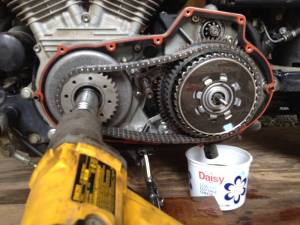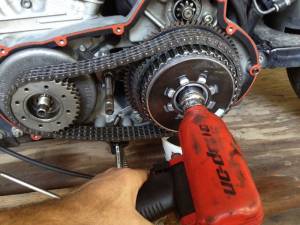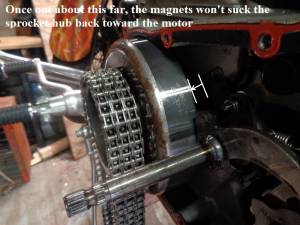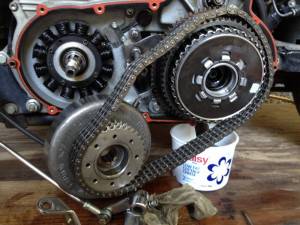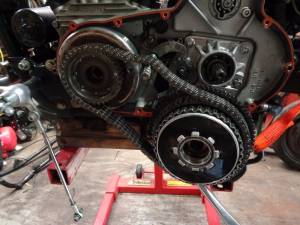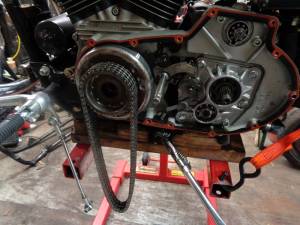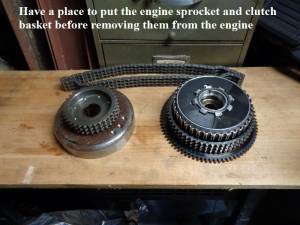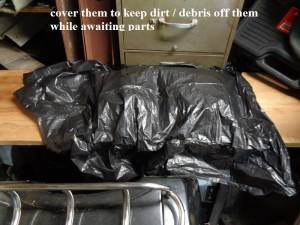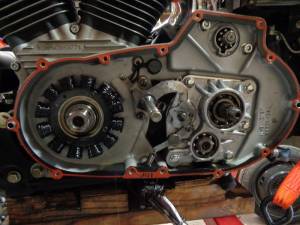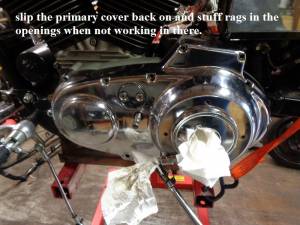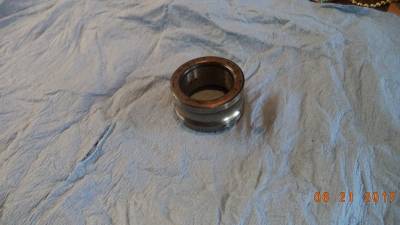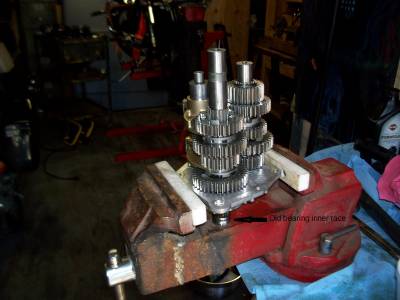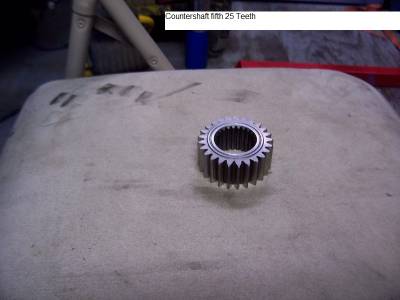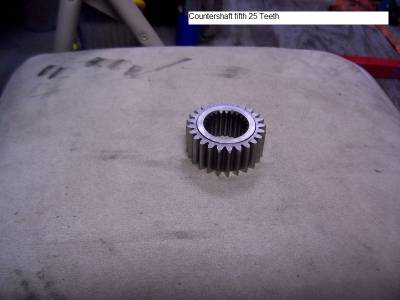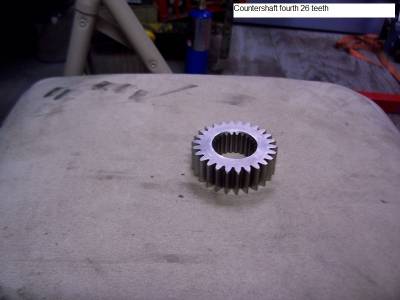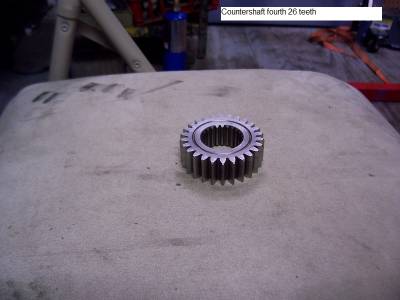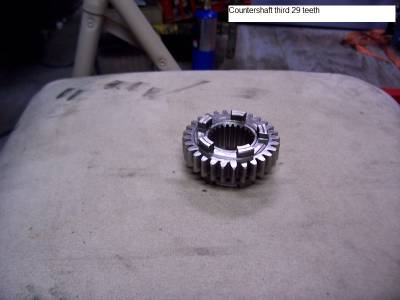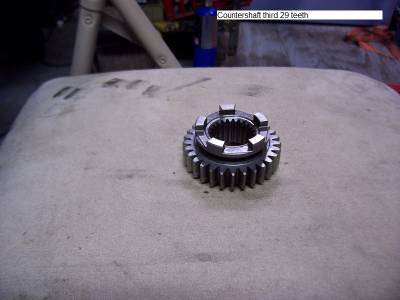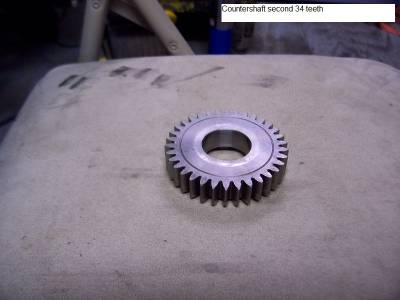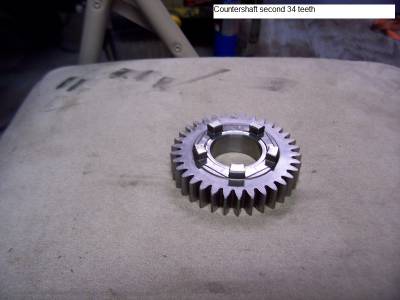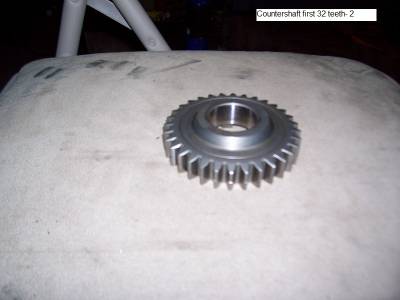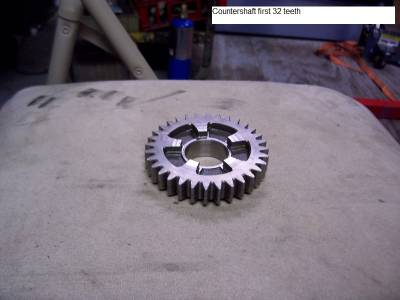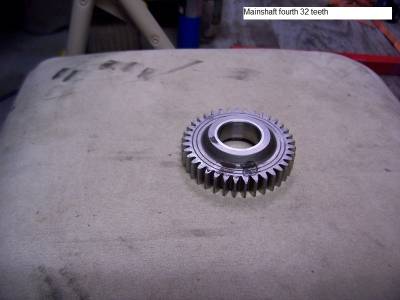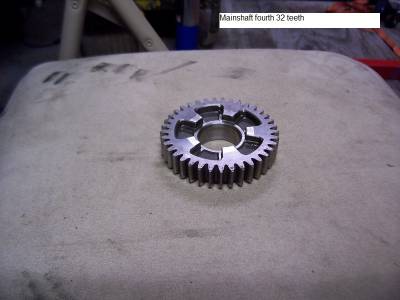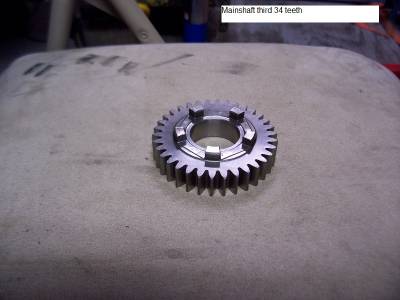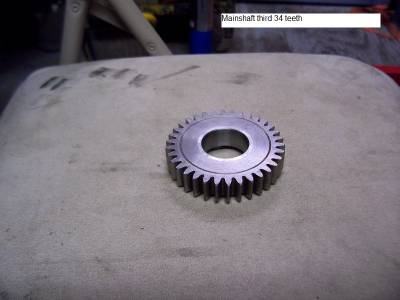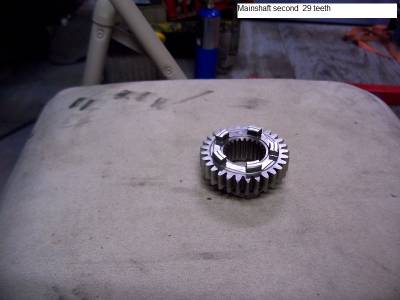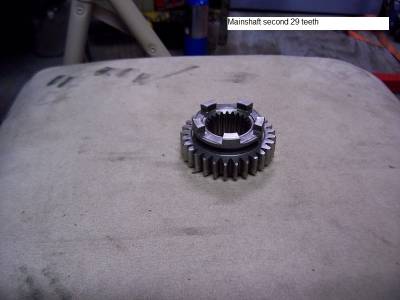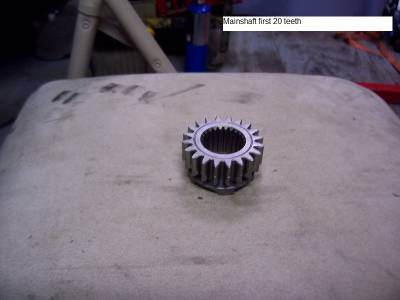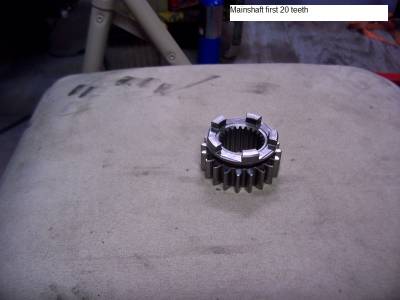Table of Contents
This is an old revision of the document!
REF: Service Procedures 11
1991-2003 5 Speed Transmission Removal / Inspection / Installation
This section is not meant to be a replacement to the FSM.
It is meant as a compliment to the FSM with added information with pics that are not in the manual.
Always buy an Factory Service Manual AND a Factory Parts Catalog to help you along your maintenance path.
The Haynes and Clymer brand service manuals for the most part will suffice and they generally have more pics than the HD Service manual.
But the HD manuals will be the most accurate.
All in all, there are discrepancies in all of them including the HD parts and service manuals though.
Sub-Documents
Transmission Removal / Installation
The original XLF thread was written by Hippysmack of the XLFORUM 1) and reformatted in the Sportsterpedia with additional information from various XLForum threads and members.
Also reference the sub documents above for a more in-depth look at the shifting mechanism and associated issues with it.
Click on any pic below to enlarge:
Going through all these steps will familiarize you with your transmission both mentally and physically.
Once removed, you should lay the tranny horizontally on a bench and physically run through the gears.
Make sure there is no binding and that movements are free and smooth. It will have some play since it's not installed.
Move the shift forks with your hands to make the gears move and run through and back.
Later on, you'll feel the gear action and you'll know how it sounds and feels when actuated by itself with no load.
This may help you diagnose later when things will not shift properly.
- Before removing anything after the primary cover comes off, check all parts for scoring, metal to metal contact or bits of metal or debris in the case.
Remove the Primary Cover
Diagnosis begins before, during and after a teardown.
Before the primary cover comes off, remove the primary drain plug and check the magnetic end for excess debris.
This will give you an idea whether or not there is imminent wear you may need to look for once inside the primary.
A small amount of mush is normal as the metal to metal contact will accumulate metal mush over time.
But it should not be in the form of spurs or shards on the magnetic drain plug.
Also check the color of the primary oil.
It'll smell like gear oil which is normal but it should not be multicolored or full of metal grains.
The shifter arm will most likely have some light scoring from contact with the back of the clutch basket.
And the starter ring gear teeth have a red tent and scorings.
See the link “What Causes the 1991-2003 Shift Arm to Scrub the Starter Gear” in the sub documents at the top of the page.
The detent arm below shows signs on scoring and they are deep across the arm in one place.
| 1998 1200S Primary 2) |
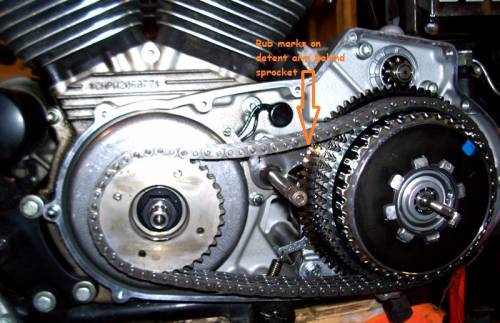 |
Removing the Primary Drive
See also Replacing Stator Magnets in the tools section of the Sportsterpedia.
Note:
Unless noted otherwise, the engine below is a 98 XL1200S that has been upgraded to 1250 with a Buell XB crankshaft and respective engine sprocket.
Normally when loosening or tightening these nuts, you will need to lock the hub & sprocket - Do not wedge the chain.
You can buy a primary locking tool (bar) or use a closed 4“ BRASS hinge as a wedge. Place the wedge so as not to put pressure on the shifter shaft
There are also several 4 and 5 speed primary locking tool examples in the tool section.
A closed 4” BRASS hinge also works well to lock the sprockets and then you can use a pull bar and sockets / socket wrench.
The threads should have previously been assembled with red Loctite.
Using a propane torch (on the nut or bolt only) will heat up and melt / soften the Loctite somewhat to make removal easier.
Remove both fasteners holding them on before attempting to remove either.
Big socket wrenches or pullbars give you a lot more leverage to make removing the fasteners less strenuous.
Note:
The engine sprocket has right hand threads (lefty loosy-righty tighty)
The clutch basket has left hand threads (lefty tighty-righty loosy)
| This tool made from 5/16“ scrap steel to lock the sprockets (app 4-1/4” x 1-1/2“ with beveled the edges). 3) | |
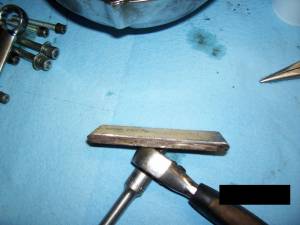 | 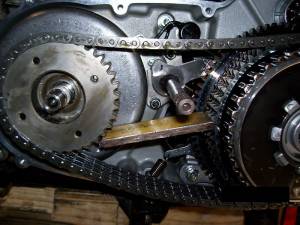 |
| XL1250S with Buell XB crankshaft 4) | XL1200S 5) | |
| Engine and clutch sprockets are removed at the same time and thread directions are the same. | ||
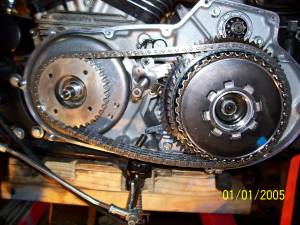 | 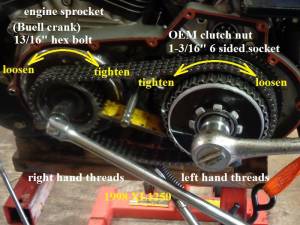 | 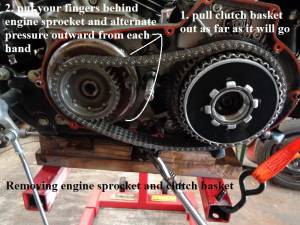 |
A reversible impact wrench has been used successful in removing both the engine sprocket and the clutch basket nut.
However, it's not recommended to use for installing either sprocket. A torque wrench is needed to get the proper clamp foce on the fasteners.
Whichever way you remove them, use regular six-sided sockets.
They are less likely to slip and round off the edges of the nuts. Impact-type sockets may be too thick to fit.
The engine sprocket and clutch hub should be removed as one unit.
Both have to come out together to some point since the chain will tighten and neither will budge at that point.
Once they are both moved out far enough, you may be able to get one or the other to come off without the other.
Once the sprocket and clutch basket is removed, you can gain access to the mounting screws for the stator.
You'd think both should slide off at this point.
However, the magnets on the engine sprocket are very strong and will keep a good amount of pressure toward the engine until it's moved out so far.
Pull the clutch basket out as far as possible and then maneuver your fingers both hands under the engine sprocket.
Rock it side to side while pulling outward.
Slowly you can rock it out enough to get your fingers under it to move it out far enough to release the force generated by the magnets.
If the chain gets tight, move the clutch basket out some more and go back to the sprocket.
DO NOT DROP THE ENGINE SPROCKET. The magnets can crack or break off and that's a different problem.
However they come off is fine as long as they are not dropped.
Make sure you already have a place to put them and a clear walking path before removing them from the engine.
Cover them to keep dirt / debris off them until they are ready to go back on.
Slip the primary cover back on and stuff rags in the openings when not working inside the engine to help keep out dirt / debris.
| This is why you should not beat on the engine sprocket to loosen it. Too easy to break the magnets behind it. 16) |
|
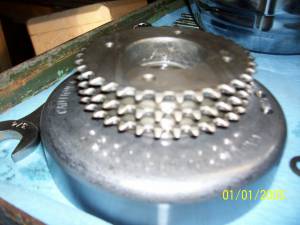 | 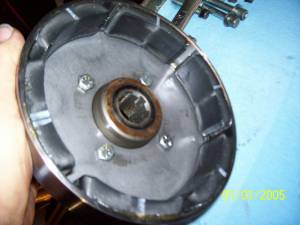 |
Inspection
Once the tranny is out and before disassembly, you can test for smooth movement of the gears, forks and bearings.
You can set it on a bench and prop it up so you can visually inspect all parts for damage or wear and run through the gears by hand.
It will be flimsy, not installed, since the rear of the shafts are normally supported by the right case.
But you can carefully position it to check gear movement.
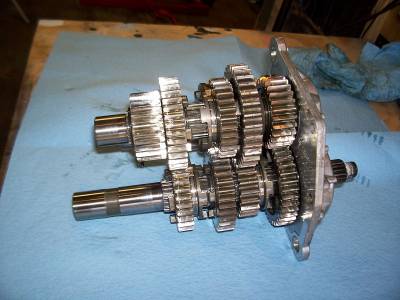 |
|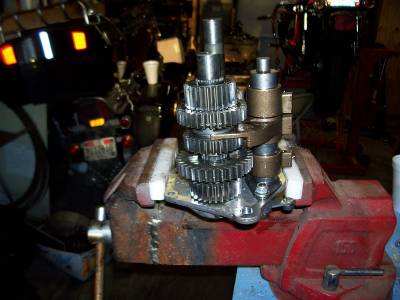 |
|
Disassembly
You can do this with the tranny laying on a bench but it's easier to prop the shaft ends up so you can lift gears and use both hands on retainers and such.
You can use soft jaws in a bench vise to hold the assembly.
You can also cut the outer race off the old main and countershaft bearings with a Dremel to use the inner races as a press block for new bearings.
The main inner race also doubles as a stand for the mainshaft to keep the threads safe in a vise.
Transmission Gears

